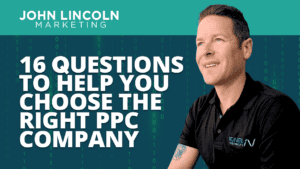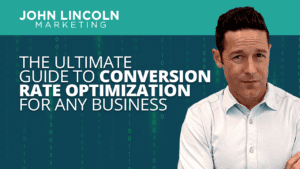
Top 16 Questions to Ask a PPC Company in 2024
In 2024, choosing the right PPC company is not just about spending your advertising budget. You want to make every cent count towards your business
“How did you arrive at that valuation for your business?”
If you’re running your own online business, do you know how much it’s worth? You should if you’re planning on making an exit or approaching a venture capitalist for an investment.
In this article, I’ll go over several simple steps to value your website.
It all starts with math. Here’s the equation that the website brokers at Empire Flippers use to determine what an online business is worth:
Okay, let’s unpack that.
First, keep in mind that the number on the left side of the formula is a monthly number. In spite of the fact that you see “12-Month” in the description, it’s an average monthly net profit.
Next, let’s look at the last word on the right side of the equation: “multiple.”
Businesses are often valued with a multiple. Take a number (in this case, average monthly net profit) and multiply it by another number and that’s what the business is worth.
But what’s the multiple? It ranges from 20-50 in the formula above.
That’s a fairly wide range. If your monthly net profit is $10,000 and you multiply it by 20, your business is worth $200,000.
On the other hand, if you multiply that same monthly net profit by 50, your business is worth $500,000.
That’s a $300,000 difference.
So which number is right in that case? It depends.
What does it depend on? I’ll cover that in the sections below.
The formula I highlighted above is certainly not the only one that people use to value a website or business.
Some brokers opt for this formula instead:
Ah, now we’re getting into accounting acronyms. What is EBITDA?
It stands for Earnings Before Interest, Taxes, Depreciation, and Amortization.
Once again, if you’re not an accountant, that might be a bit too much to take in. I’ll break it down.
Your earnings are your net profits. In this case, we’re looking at earnings on an annual basis, not a monthly basis. That’s very important to keep in mind when using this valuation model.
Interest is the cost of money. It’s how much you pay to borrow from financial institutions.
Taxes are the expenses you pay to federal, state, and local governments as a result of running your business.
Depreciation is an intangible expense. It’s an expense you “pay” as your equipment and other properties drop in value over time.
Amortization refers to the principal you take-off of a loan when you pay it back or a capital equipment purchase you expense over time.
Let’s run through an example to make things clearer.
Suppose your business earned $100,000 last year. Your taxes for that year were $30,000.
Additionally, your accountant says that your interest expenses were $10,000, your depreciation expenses were $5,000, and you amortized $10,000 in loans and capital equipment purchases.
To calculate EBITDA, you’d add back your interest, taxes, depreciation, and amortization to the $100,000 you earned.
Your EBITDA for that year was $155,000.
So to value your online business, you would multiply that $155,000 by 2 or 3.
But once again, should you use 2 or 3 when valuing your business? Keep reading for an answer to that question.
EBITDA, by the way, is sometimes called “cash flow.” When you hear business brokers talking about a “cash flow multiple,” they’re referring to the formula I covered in this section.
Once you’ve picked a formula and run the numbers, you might think that you know exactly what your business is worth.
Not necessarily.
Put the formulas aside for a moment and accept this cold, hard reality: a business is worth what people will pay for it.
That’s it. That’s the story.
You can try to convince potential buyers that your business is worth what the first formula says it’s worth, but if they aren’t willing to shell out that much cash for it, then that’s not what it’s worth.
Take a look at the stock market for plenty of examples. Some stocks are trading at 7 times annual earnings. Others are trading at 60 times annual earnings.
Why? Because that’s what investors are willing to pay for those stocks.
So please understand that the equations above are a great starting point, but they aren’t the final word.
Getting back to the formulas: which multiple do you pick in either case?
While the easy answer is “the highest one,” that’s not necessarily the right answer. Potential buyers will give your business a pass if they think it’s valued too richly.
To reach the right multiple, you need to evaluate several valuation influencers associated with your online business. Let’s go over them one-by-one in the next several sections.
The first valuation influencer is one of the easiest: add-backs.
Add-backs are expenses associated with your business that aren’t necessary to keep your business profitable.
Think about it: what are your discretionary expenses? Are you expensing lots of meals at 5-star restaurants? Attending conferences and staying in nice hotel rooms?
If you’re taking advantage of certain aspects of the tax code to make life a little more enjoyable, you can add those expenses back to give your business a richer valuation.
Additionally, if you’re expensing digital marketing tools that potential buyers are already using, that’s an add-back as well.
Of course, buyers want to pay the lowest price possible for your business so they typically won’t volunteer that they’re already using certain tools. You might have to draw it out of them at the beginning of negotiations.
Keep in mind, though: most of your expenses won’t be add-backs.
How are you getting traffic to your website? Are you relying on SEO or advertising?
That’s an important question to answer because potential buyers will often view a website that gets its traffic primarily from SEO as more valuable than one that relies on continual advertising.
Why? Think about it: digital advertising is an ongoing expense while SEO is already done. It’s free.
Yes, most savvy website operators will know that they have to work to maintain high rankings. But the heavy lifting is done and preserving SEO rank is typically cheaper than paying for online ads.
Also, keep in mind that digital advertising is a skill set that some buyers might not possess. Many of them don’t know the first thing about optimizing bids, various types of keyword matching, or how to use some of the online advertising platforms.
If you rely on advertising, that’s going to make your business less attractive to those folks.
That’s why you can usually go with a higher multiple if you’re drawing in the vast majority of your traffic with SEO.
There’s a caveat, though: if all your traffic comes from a single SEO strategy, a smart buyer will realize that the traffic can disappear overnight with an algorithm change. Make sure you demonstrate multiple white hat SEO strategies and content value to people who are looking at your website.
Another way to give your multiple a boost is if you demonstrate consistent profits.
The first formula I covered above uses the average monthly profit on the left side of the equation. But if your profit is only $1,000 for one month and $20,000 for another month, the average might not mean much to a buyer.
It’s better to show a buyer a history of consistent, reliable profits.
Did you ever watch CNBC and hear an anchor or guest talk about how a certain company is trading at a specific multiple of “forward” earnings?
What are the forward earnings?
Those are the earnings that a company is expected to post next quarter or next year.
Why are they important? Because investors often want to invest in companies that are growing.
People who buy websites are no different. They want the business they purchase to continue to grow.
If your online business is in the early stages of the product life cycle and you’re raking in the cash, buyers are going to find that very attractive. Go with a higher multiple in that case.
On the other hand, if your numbers are showing a steady decline in revenue, then it won’t matter what the formula says your business is worth. People will see that it’s shrinking and probably shy away from it.
There’s another side to the growth story, though. If you just started your business and it’s growing rapidly, some possible buyers might view that as a risk because it hasn’t been around for a while.
Typically, business buyers like to see a consistent, lengthy history of profitability. If you can put that history together with solid growth, then you can use a higher multiple in your equation.
But if you’re brand, spankin’ new to the website scene, the only buyers who will consider making the purchase are folks who are into speculation. In that case, your website is basically a penny stock.
Digital marketing guru Neil Patel runs a popular website at neilpatel.com. It generates lots of traffic from SEO.
On paper, it’s worth a fortune.
But would you buy it if you had the cash? Probably not.
The website is literally his personal brand. If he leaves, so does a lot of the value.
That’s probably an extreme example because Patel already hires ghostwriters to do his writing for him, but you get the idea. Some online businesses are tied to the owner of that business.
If you’re running a website that has your name on it, you might find that it’s difficult to sell.
Similarly, if you’re operating an online business that you built by forging professional relationships with clients, you’ll also likely run into problems when you go to sell the business.
Folks who are looking to buy a website don’t want to worry about customers or clients dropping off because the current owner is no longer in the picture.
Let’s say you’re running an Amazon affiliate website. You attract plenty of customers and your business is growing.
What happens if Amazon changes its terms of service tomorrow so that you can only sell half of what you sell now?
Obviously, that’s going to be bad for business.
Similarly, if your business model involves anything that’s even remotely controversial, your site could get blacklisted by Google, Amazon, and even some social media apps.
That would devastate your business as well.
How about if you’re running an ecommerce site and you use only one supplier? What happens if that supplier goes out of business?
Again, you’ll feel the pain.
The point here is that if you rely too much on third parties to generate income, you’ve got some uncertainties that website buyers will take into account when valuing your business.
Do you own lots of large email lists that you routinely use for digital marketing? If so, then you just added value to your business.
Entrepreneurs love email lists. That’s especially the case if they’re segmented.
They know that they can use those lists to target the right people with the right message. They can also use them in drip campaigns to reel in even more revenue.
What kind of a following does your business have on various social media channels?
If you can demonstrate that you have plenty of genuine followers and not just bots who are following you to boost stats, then you stand a good chance at convincing possible buyers that your brand is real.
Even better, if those buyers see lots of your followers engaging with your social media posts, they’ll know that your business generates goodwill.
And if they notice lots of shares/retweets, they’ll know that you’ve built a following of brand evangelists. That’s worth a higher multiple.
Yes, size does matter.
The more products you sell online, the less you risk losing your business.
Why? Because when one product falls out of favor with the public you have plenty of other offerings that still generate revenue.
People who look to buy online businesses know that and will take it into consideration when deciding how much they’re willing to pay for a website.
Some people buy a business as little more than a passive investment. They just want to make the purchase and reap the rewards while others do most of the work.
Others don’t mind running a business as an owner-operator. Those folks will pay a premium for a good business even if they have to get their hands dirty.
But I’m sure they wouldn’t mind a little extra time to spend with their families if they could buy a business that’s already on autopilot.
If your business almost literally runs itself, you can give it a higher valuation.
Maybe you have an amazing business that’s profitable and growing by leaps and bounds.
Can someone come along tomorrow and copy it? If so, then it’s valuation just dropped.
By quite a bit.
The copy ability factor is something that you’ll see the sharks frequently address on Shark Tank. They don’t want to buy a business that somebody else can come along and duplicate. For good reason.
Similarly, potential website buyers don’t want to buy a website that can be copied overnight.
If you’re running an ecommerce site, you’re probably selling the inventory along with the business. That inventory has a tangible value.
Sometimes, brokers will value a business using one of the equations above plus inventory.
In other words, inventory is added to the value derived from the equation.
Why? Because inventory isn’t part of the goodwill of the business. It’s part of the assets.
When you buy a business (online or otherwise), you typically purchase the assets plus the goodwill.
The goodwill is the value of the brand based on its reputation, potential for growth, proprietary technology, and other intangible assets..
The assets are the physical items owned by the business. They include equipment, real property, and inventory.
When an entrepreneur buys your website, he or she will need to maintain enough cash on hand for day-to-day expenses. That cash is called working capital.
You might run an online business that’s doing really well, but if it requires a healthy amount of working capital, some buyers might take a pass.
That’s going to lower the value of your website. Keep that in mind when searching for a multiple to plug into your equation.
When you determine how much your website is worth, start with simple math. Pick an equation, plug in some numbers, and get the value.
Keep in mind, though, that valuation isn’t an exact science. It’s impacted by other aspects of your business, such as its traffic sources, the potential for growth, and discretionary expenses.
But most importantly, your business is worth what people are willing to pay for it. Not a penny more.
Welcome to John Lincoln’s personal website. You can learn about John Lincoln’s books, films, book him to speak and contact him. John is directly associated with many of the businesses mentioned on this website and freely discloses this information.

John Lincoln is CEO of Ignite Visibility, one of the top digital marketing agencies in the nation. Ignite Visibility is a 6x Inc. 5,000 company. Ignite Visibility offers a unique digital marketing program tied directly to ROI with a focus on using SEO, social media, paid media, CRO, email and PR to achieve results. Outside of Ignite Visibility, Lincoln is a frequent speaker and author of the books Advolution, Digital Influencer and The Forecaster Method. Lincoln is consistently named one of the top digital marketers in the industry and was the recipient of the coveted Search Engine Land “Search Marketer of The Year” award. Lincoln has taught digital marketing and Web Analytics at the University of California San Diego since 2010, has been named as one of San Diego’s most admired CEO’s and a top business leader under 40. Lincoln has also made “SEO: The Movie” and “Social Media Marketing: The Movie.” His business mission is to help others through digital marketing.
Want to get in touch with John Lincoln? Click Here To Reach Out.

In 2024, choosing the right PPC company is not just about spending your advertising budget. You want to make every cent count towards your business

Whether you’re a seasoned marketer or just starting out, conversion rate optimization (CRO) is a powerful tool that can boost your sales, leads, and overall

Feeling overwhelmed by the sea of SEO companies out there? You’re not alone! Choosing the right partner is crucial for achieving your online marketing
 Complete Review of Searchmetrics
Complete Review of Searchmetrics Looking for a marketing platform that offers competitive insights, advanced analytics, mobile SEO, and market analysis? If so, then you